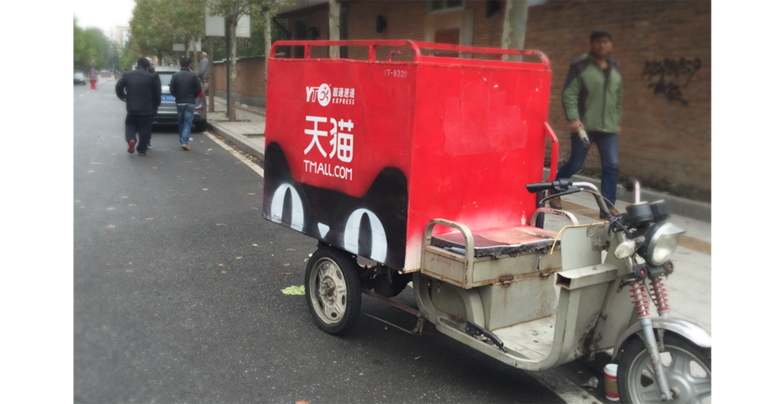As the e-commerce (EC) market gains momentum worldwide, China is showing unique development. What is the current state of China, which could be called an "EC superpower"? What kind of movements can we expect going forward? We asked Maki Nishida, China National General Manager of the Digital Business Department at Dentsu Digital Inc.
The E-Commerce Market at a Crossroads Amid Unique Internet Culture
──Is China's e-commerce market expanding?
Nishida: As of December 2015, China had over 688 million internet users, with an overall internet penetration rate of 50.3%. Among these users, 60% have experience with e-commerce. This shows e-commerce has become an integral part of users' lives.
Furthermore, in 2015, transactions via mobile devices and tablets accounted for 49.2% of e-commerce, indicating rapid multi-screen adoption in this sector.
The scale of e-commerce transaction volume is also enormous. E-commerce is the core business of Alibaba Group, China's largest IT company. In 2014, the group's merchandise e-commerce transaction volume made it the world's undisputed number one e-commerce company.
Furthermore, November 11th is known in China as "Singles' Day." To stimulate consumption, a massive e-commerce promotional campaign is held once a year, exclusively on this day. The sheer scale of transactions on this day alone is remarkable. For example, Tmall, China's largest B2C e-commerce platform, generated sales of ¥1.8 trillion on Singles' Day alone.
──Are there any trends unique to China that differ from Japan and other countries?
Nishida: Alibaba Group operates platforms spanning B2B "business-to-business e-commerce," B2C "mall-type e-commerce," and C2C "auction-type e-commerce." Tmall, mentioned earlier, is Alibaba's B2C mall-type platform, while for C2C, it operates Taobao, an auction-type platform.
What's crucial is the market share these platforms command. Combined, Tmall and Taobao account for a staggering 60% of China's total e-commerce transaction volume. The second-place player, JD.com, holds 25.1%, while third-place Suning holds 3.4%, showing Alibaba significantly outpacing its competitors. This situation is a major characteristic of China's e-commerce landscape.
Looking at the businesses operating on Tmall, there are over 70,000, including manufacturers and major distributors. The products sold range widely from fresh food to automobiles. For example, in 2015 alone, over 100,000 cars were sold on the platform. It's rare to find a country where e-commerce transactions for such high-value goods are this robust.
Current State of E-Commerce Users in China
──What factors influence Chinese users when choosing e-commerce sites?
Nishida: In China, three major companies—Baidu, the top search engine; Alibaba, the top e-commerce platform; and Tencent, the top social platform—compete across various online services. Each leverages its core strengths to expand all online services under their respective groups. This creates a pronounced "walled garden" effect, preventing users from accessing competitors' services.
Notably, this competitive dynamic has created situations like "Baidu's search engine cannot link to Tmall's e-commerce site" and "Tencent's social media cannot link to Tmall's e-commerce site." For e-commerce users, this means fundamental purchasing pathways are blocked in China.
Consequently, Chinese e-commerce users have no choice but to directly access Tmall to search for desired products or click on ads within Tmall to make purchases. Moving to other e-commerce sites is difficult. Customer mobility is low, creating an environment where users find it hard to freely choose e-commerce platforms.
Apple serves as a clear example illustrating this situation. The company sells exclusively through its own online stores in every other country and does not open shops on other e-commerce malls. However, it has opened a shop on Tmall specifically for China. This decision stems from the unique online environment specific to China.
The Key to Manufacturers Taking the Lead
──Please share the trends among manufacturers opening stores on e-commerce sites.
Nishida: Chinese e-commerce companies have engaged in fierce competition for customers. As a result, fundamental e-commerce services like payment processing, logistics, and customer support have improved across the board. For instance, in major cities, items ordered in the morning often arrive by midday. Services range from handling returns and inquiries to automated systems that pick recommended products for each customer, offering highly personalized support.
On the other hand, as these services matured, it became difficult for e-commerce platforms to differentiate themselves using them as a competitive advantage. Consequently, in recent years, an excessive "price war" to retain and expand customer bases has persisted. The reality is that the cost of these "price cuts" is not borne by the e-commerce platforms themselves, but is instead passed on to the manufacturers who operate stores on their platforms. Manufacturers are forced into a situation where they must lower their product prices.
Furthermore, each e-commerce site requests manufacturers to contribute to advertising placements and promotional campaigns. Manufacturers provide substantial promotional expenses to these e-commerce companies throughout the year. They are effectively having profits siphoned off by the e-commerce platforms, and on top of that, they cannot even retain customer information. They find themselves in this harsh situation.
However, manufacturers aren't sitting idly by. Some are launching their own e-commerce strategies to regain control over sales. Moves to build their own customer bases, such as establishing proprietary e-commerce sites independent of third-party marketplaces, are rapidly expanding.
Can manufacturers regain control of sales in China's "unique" e-commerce market dominated by giant internet companies? This will be the key focus going forward. For manufacturers to achieve this goal, a multi-channel strategy and the analysis and utilization of data centered on customer information will be crucial.


